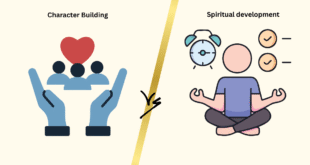Adolescence is one of the most critical and transformative stages of child development. Often referred to as the bridge between childhood and adulthood, this period is marked by rapid physical, emotional, cognitive, and social changes. It is the stage where young people begin to develop their identities, explore independence, and prepare for adult responsibilities.
The adolescence stage, spanning ages 12 to 18, can be exciting yet challenging for both teenagers and parents. Understanding the developmental milestones during this period is essential to providing the right support and guidance. In this article, we’ll explore the child development stages of adolescence, covering physical, emotional, cognitive, social, and moral growth, along with parenting strategies to nurture confident, responsible, and well-adjusted young adults.
What is Adolescence?
Adolescence is a developmental stage that begins with puberty and ends when a person attains emotional, cognitive, and social maturity. The word comes from the Latin “adolescere,” meaning “to grow up.” During this time, teenagers undergo significant biological changes, intense self-discovery, and a heightened desire for independence.
According to developmental psychologist Erik Erikson, adolescence is the stage of Identity vs. Role Confusion. Teens seek to understand “Who am I?” and develop a sense of self. If they receive proper support and guidance, they emerge with a strong identity and confidence. If not, they may experience confusion, low self-esteem, or destructive behaviors.
Why the Adolescence Stage is Crucial
The teenage years lay the foundation for future adult life, influencing career choices, relationships, and personal values.
Key reasons adolescence is important:
- It shapes a teenager’s self-identity and worldview.
- Critical academic and life skills are developed.
- Peer relationships strongly influence social behavior.
- Decisions made in this stage affect long-term health and well-being.
- It’s a time of risk-taking that requires proper guidance.
Physical Development During Adolescence
The most visible changes during adolescence are physical, driven by hormonal changes associated with puberty. These changes vary between boys and girls but follow similar patterns.
Key Physical Milestones
- Growth Spurts
- Rapid increase in height and weight.
- Boys usually experience growth spurts later than girls.
- Increased appetite due to accelerated growth.
- Sexual Maturity
- Boys: Deepening voice, facial hair, muscle development.
- Girls: Breast development, onset of menstruation.
- Brain Development
- The prefrontal cortex, responsible for decision-making and impulse control, continues to mature until the mid-20s.
- This explains why teens may engage in risky behavior without fully understanding consequences.
- Changes in Sleep Patterns
- Teens require 8-10 hours of sleep but often struggle due to hormonal changes and lifestyle habits.
Parenting Tip:
Encourage regular physical activity, a balanced diet, and adequate sleep. Help teens establish healthy routines that will carry into adulthood.
Cognitive Development in Adolescence
Cognitive abilities take a major leap forward during adolescence. Teenagers transition from concrete thinking to abstract, logical, and critical thinking, a stage described by Jean Piaget as the “formal operational stage.”
Key Cognitive Skills:
- Abstract Thinking
Teens can now think beyond the here-and-now and consider hypothetical scenarios.
Example: Debating ethical issues or imagining future careers. - Improved Problem-Solving
Ability to plan ahead, weigh options, and analyze consequences. - Development of Moral Reasoning
Teens begin to form their own opinions about right and wrong, influenced by parents, peers, and society. - Metacognition (Thinking About Thinking)
Teenagers become aware of their thought processes, enabling better self-reflection and learning strategies. - Future Orientation
Adolescents start setting long-term academic and personal goals.
Emotional Development in Adolescence
Adolescence is often an emotional roller coaster. The surge of hormones combined with social pressures leads to heightened emotions and sensitivity.
Key Emotional Changes:
- Identity Formation:
Teens explore different roles and beliefs to discover who they are. - Increased Independence:
Desire to make their own decisions and challenge parental authority. - Heightened Self-Consciousness:
Teens may feel overly concerned about how others perceive them. - Mood Swings:
Normal due to hormonal fluctuations and external stressors. - Building Self-Esteem:
Positive reinforcement and achievements boost confidence, while criticism or failure can harm self-image.
Parenting Tip:
Be patient and understanding. Encourage open conversations about feelings and listen without judgment.
Social Development in Adolescence
As teenagers spend more time with peers, social relationships become a central focus of their lives.
Key Social Changes:
- Peer Influence
- Friends play a huge role in shaping behavior, preferences, and attitudes.
- Peer pressure can lead to both positive growth and risky behavior.
- Romantic Interests
- Teens begin exploring romantic relationships and understanding emotional intimacy.
- Teamwork and Leadership
- Participation in clubs, sports, and group projects develops collaboration skills.
- Independence from Parents
- While family remains important, teens seek autonomy and may resist authority.
Parenting Tip:
Encourage healthy friendships and maintain open communication about relationships and peer pressure.
Moral and Spiritual Development
During adolescence, teens begin to internalize values and beliefs, transitioning from relying on parents’ guidance to developing personal principles.
Key Aspects:
- Advanced Moral Reasoning:
Teens think deeply about ethical issues like justice, equality, and responsibility. - Spiritual Exploration:
Adolescents may question religious teachings, which is a normal part of faith development. - Empathy and Compassion:
Growing ability to understand and care about others’ feelings and struggles.
Parenting Tip:
Model strong values and provide opportunities for meaningful discussions about faith, morality, and service to others.
Challenges Faced During Adolescence
Adolescence can be challenging for both teens and parents. Here are common issues and solutions:
| Challenge | Solution |
| Peer Pressure | Teach assertiveness and decision-making skills. |
| Academic Stress | Help teens develop time management skills and reduce unnecessary pressure. |
| Risk-Taking Behaviors | Openly discuss risks of drugs, alcohol, and unsafe online behavior. |
| Identity Confusion | Support exploration of interests and goals without judgment. |
| Social Media Influence | Set boundaries and educate about digital responsibility. |
| Anxiety or Depression | Seek help from counselors or mental health professionals when needed. |
Parenting Tips for Adolescence Stage
Parenting a teenager requires patience, flexibility, and a balance of guidance and freedom.
Practical Tips:
- Communicate Openly
- Listen actively and avoid lectures.
- Create a safe space for honest conversations.
- Set Clear Boundaries
- Rules provide structure while allowing room for independence.
- Be a Role Model
- Teens learn more from what you do than what you say.
- Encourage Healthy Habits
- Promote exercise, balanced nutrition, and proper sleep.
- Support Academics Without Pressure
- Focus on effort and improvement, not just grades.
- Stay Involved in Their Digital World
- Teach safe online behavior and monitor screen time.
- Respect Their Privacy
- Allow them personal space while staying aware of their activities.
Adolescence and Technology Use
Technology plays a major role in modern adolescence, offering both opportunities and risks.
Guidelines for Healthy Tech Use:
- Set daily screen-time limits.
- Encourage educational apps and creative digital activities.
- Discuss cyberbullying, privacy, and online safety.
- Promote offline hobbies like sports, reading, or volunteering.
Signs You May Need Professional Support
Seek professional help if you notice:
- Persistent sadness, anxiety, or withdrawal.
- Extreme mood swings or aggression.
- Sudden drop in academic performance.
- Substance abuse or risky behavior.
Early intervention can prevent long-term issues and ensure the teen receives appropriate care.
Preparing Teens for Adulthood
The ultimate goal of parenting during adolescence is to prepare teens for independent adult life. Focus on:
- Teaching life skills like budgeting, cooking, and time management.
- Encouraging problem-solving and critical thinking.
- Helping them set career and education goals.
- Instilling values of responsibility and empathy.
Conclusion
The adolescence stage (12-18 years) is a time of extraordinary growth and transformation. While it comes with challenges, it also offers incredible opportunities for shaping future adults. By understanding the physical, emotional, cognitive, and social changes that occur, parents and caregivers can provide the right balance of guidance, love, and freedom.
Remember, teenagers need a strong support system to navigate this crucial stage. With patience, communication, and consistent values, you can help them emerge from adolescence as confident, compassionate, and capable young adults.
 Edutarbiyah English Blog of Parenting and Tarbiyah
Edutarbiyah English Blog of Parenting and Tarbiyah



